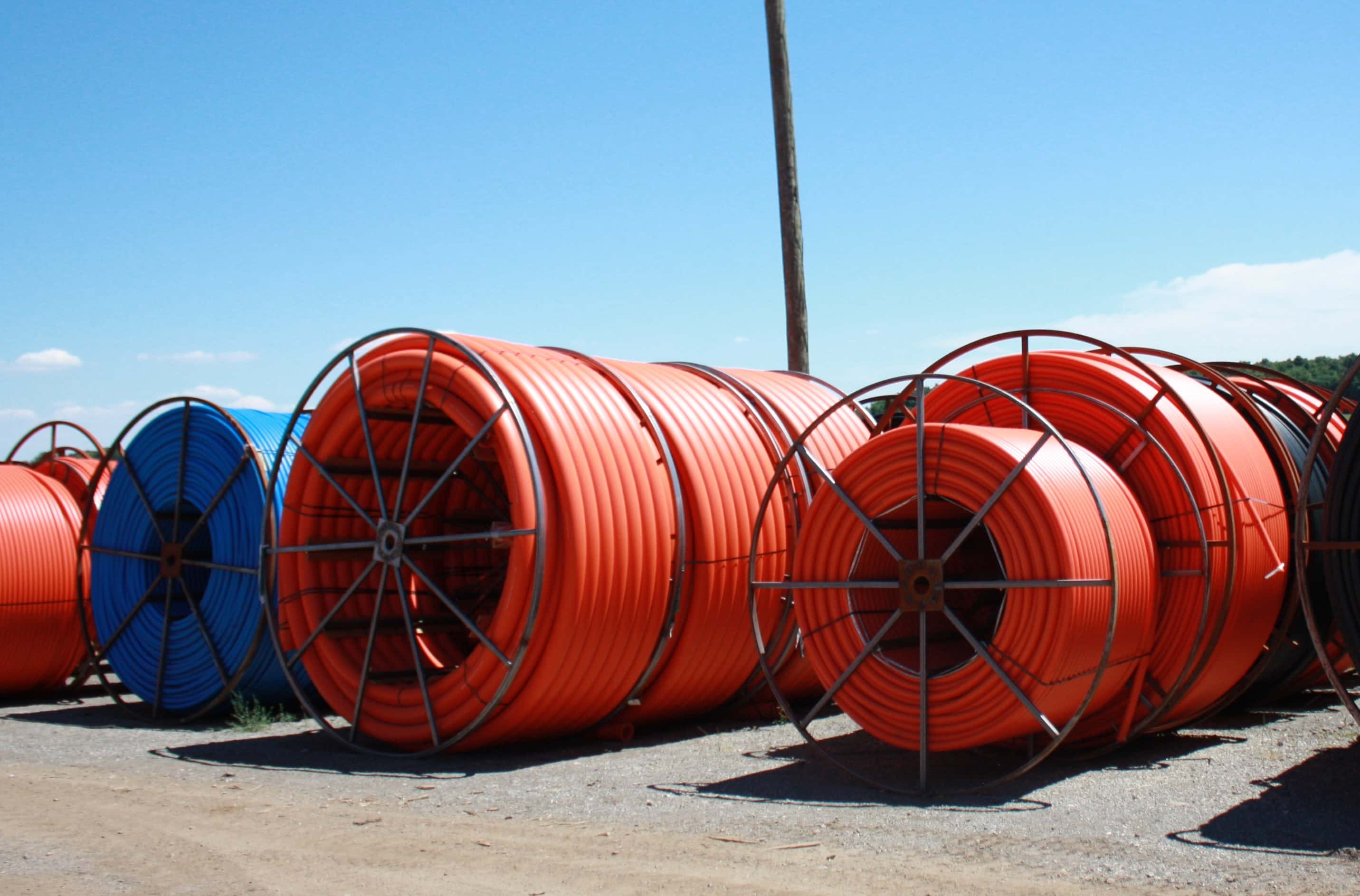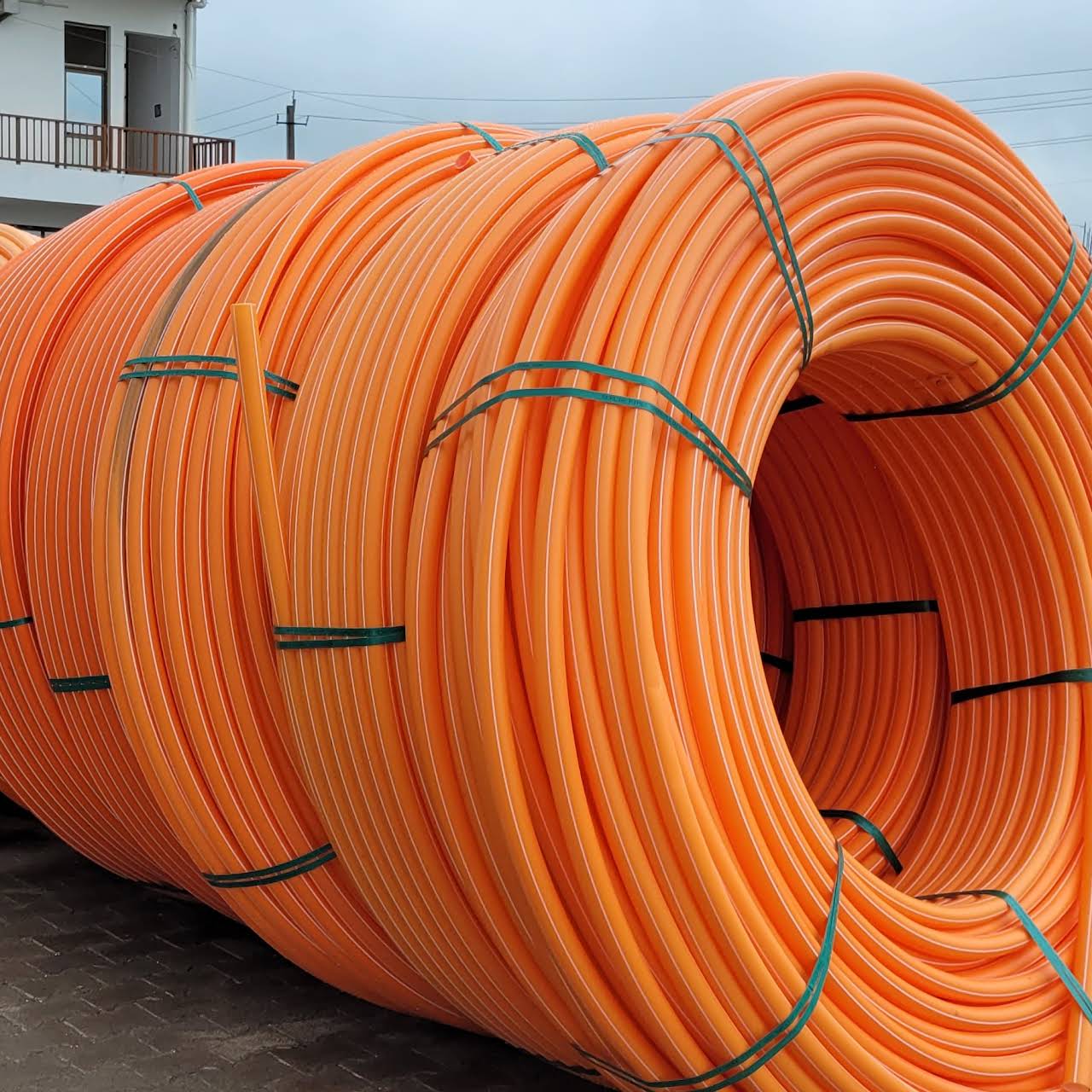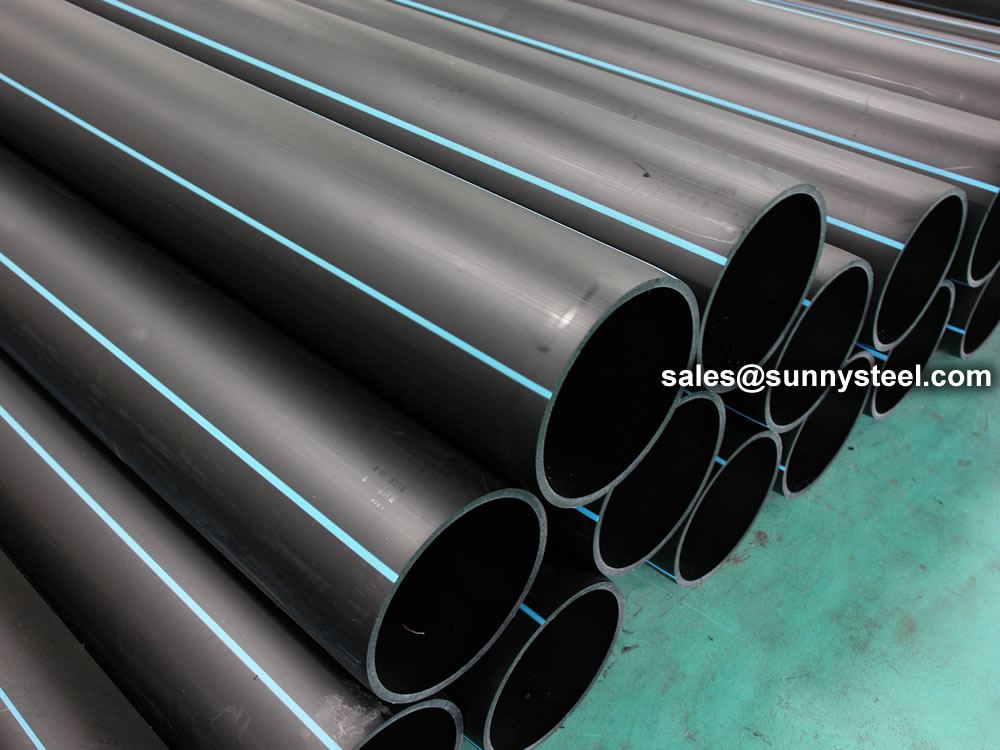Explore the Production Process Behind High-Quality HDPE Pipeline and Its Applications
The production process of high-grade HDPE pipes is elaborate and systematic. It starts with the selection of resources that improve efficiency. Following this, ethylene undertakes polymerization to form resin, which is after that formed through extrusion. Quality control is paramount, guaranteeing that the end product meets rigid criteria. Nonetheless, the trip of HDPE pipelines does not finish with production. Their applications across different markets expose a more comprehensive significance worth taking a look at.
Recognizing HDPE: Properties and Advantages

High-density polyethylene (HDPE) is a functional thermoplastic known for its longevity and resistance to various ecological variables. This material shows outstanding tensile stamina, making it appropriate for requiring applications. Its low-density framework contributes to a light-weight item, facilitating ease of dealing with and installment. HDPE likewise showcases amazing resistance to chemicals, which reduces degradation when subjected to severe substances.
The material's reduced wetness absorption further boosts its durability, making it ideal for usage in pipelines and storage space tanks. Additionally, HDPE is resistant to ultraviolet (UV) radiation, ensuring that items keep their stability even when revealed to sunlight. Furthermore, its versatility permits for the development of intricate forms without compromising stamina. The eco-friendly nature of HDPE, usually originated from recycled products, includes in its charm, advertising sustainable methods in production. Generally, these properties and advantages make HDPE a recommended option for various commercial and customer applications.
Raw Product Selection for HDPE Manufacturing
The option of basic materials for HDPE production is vital to verify the last product satisfies the wanted specifications and high quality standards. High-density polyethylene (HDPE) is mainly generated from polymerized ethylene, originated from nonrenewable fuel sources such as gas or petroleum. The top quality of these feedstocks considerably influences the mechanical and thermal residential or commercial properties of the last HDPE.
Ingredients also play a considerable duty in enhancing HDPE's performance, consisting of anti-oxidants, UV stabilizers, and colorants, which improve resilience and resistance to ecological elements. The choice process need to take into consideration not only the chemical composition of the raw products however likewise their processing characteristics to guarantee reliable production.
Additionally, the sourcing of basic materials ought to prioritize sustainability and conformity with ecological guidelines, as liable methods are vital in today's market. Ultimately, mindful resources selection lays the foundation for creating premium HDPE pipes ideal for diverse applications.
The Extrusion Refine: Shaping HDPE Pipeline
The extrusion process plays a vital function fit HDPE pipes, starting with precise product preparation techniques that ensure suitable flow and uniformity. Similarly important is the style of the die, which directly influences the final dimensions and surface high quality of the pipe. With each other, these elements add greatly to the effectiveness and quality of HDPE pipeline manufacturing.
Product Prep Work Strategies
Effective manufacturing of HDPE pipelines begins with careful material prep work techniques, especially the extrusion procedure. Throughout this stage, high-density polyethylene resin is very first dried out to eliminate wetness, making certain ideal flow features. The resin is after that fed right into the extruder, where it undertakes heating and melting, changing right into a viscous state. This heating procedure is very carefully managed to keep the material's stability and performance. The liquified HDPE is forced via a die, shaping it right into a continuous pipe type. Appropriate temperature level administration throughout extrusion is crucial, as it straight affects the product's homes and the last product high quality. As soon as formed, the HDPE pipeline is cooled and reduced to defined sizes, all set for succeeding processing and applications.
Die Design Value
Precision in die style plays a crucial duty in the extrusion procedure of HDPE pipes. The die functions as the final shaping device, straight influencing the pipe's dimensions, wall surface density, and surface finish. A properly designed die assurances uniform material circulation, lowering defects such as irregularities and vulnerable points. The geometry of the die need to be maximized to accommodate the details homes of HDPE, including its viscosity and thermal behavior throughout extrusion. In addition, the cooling rate of the product as it goes through the die can noticeably affect the pipeline's structural honesty. Spending in sophisticated die innovation is crucial for makers aiming to create premium HDPE pipelines that satisfy industry standards and consumer expectations.
Quality Assurance Steps in HDPE Production
Although various aspects influence the high quality of HDPE pipeline manufacturing, efficient top quality control measures are critical to guarantee consistency and integrity in the final product. Key high quality control methods include extensive material evaluation, verifying that the raw polyethylene satisfies well-known standards for purity and density. Throughout the extrusion procedure, criteria such as temperature, pressure, and cooling time are carefully checked to keep dimensional accuracy and structural honesty
In addition, post-production screening is essential; manufacturers typically perform hydrostatic examinations to assess the pipe's toughness and resistance to stress. Aesthetic evaluations for surface defects even more enhance quality control. Certification from relevant standards organizations, like ASTM or ISO, supplies an extra layer of reliability. By carrying out these comprehensive quality assurance procedures, suppliers can lessen defects, improve performance, and make sure that the HDPE pipelines meet the details requirements of various view it now applications, inevitably bring about client complete satisfaction and rely on the item.
Applications of HDPE Pipe Throughout Industries
HDPE pipes are utilized across different markets as a result of their longevity and convenience. In water distribution systems, they assure efficient delivery, while in wastewater administration, they supply reliable services for waste transportation. Additionally, agricultural watering networks take advantage of HDPE's resistance to deterioration and versatility, making it an optimal option for contemporary farming practices.

Water Circulation Solutions
A substantial number of industries depend on high-density polyethylene (HDPE) pipes for effective water circulation systems. Understood for their resilience and resistance to deterioration, HDPE pipelines are extensively made use of in metropolitan water system networks, farming watering, and commercial applications. Their lightweight nature facilitates simple handling and setup, decreasing labor expenses and slip coupling time. Additionally, HDPE pipelines can accommodate various pressure levels, making them ideal for both reduced and high-pressure systems. hdpe pipe fittings Midland TX. The adaptability of the product permits for smooth integration right into existing framework, minimizing the demand for substantial excavation. Additionally, HDPE's resistance to chemical leaching warranties that the water provided continues to be safe and tidy, making it an excellent selection for keeping the high quality of drinkable water across different fields
Wastewater Monitoring Solutions
Efficient water distribution systems additionally lead the method for innovative wastewater monitoring solutions, where high-density polyethylene (HDPE) pipes play a substantial function. Popular for their toughness and resistance to corrosion, HDPE pipes are ideal for transporting wastewater in various setups. Their adaptability permits very easy setup in complicated settings, minimizing the requirement for substantial excavation. Additionally, HDPE's smooth interior surface minimizes friction, boosting circulation rates and performance. These pipelines are also immune to chemical leaching, making sure that impurities do not endanger the surrounding atmosphere. Industries, districts, and therapy centers progressively depend on HDPE pipelines for their integrity and durability, making them a recommended choice for modern wastewater monitoring systems. This flexibility underscores the critical significance of HDPE pipelines throughout many applications.
Agricultural Watering Networks
Agricultural irrigation networks profit considerably from the use of high-density polyethylene (HDPE) pipes, which give efficient and trusted water shipment to crops. HDPE pipelines are lightweight, making them simple to move and set up, while their flexibility enables different arrangements in diverse surfaces. These pipelines show excellent resistance to corrosion, chemicals, and UV radiation, making sure longevity in extreme agricultural atmospheres. Additionally, their smooth indoor surface area lessens rubbing loss, enhancing water flow and lowering power prices linked with pumping. The long life of HDPE pipes, typically surpassing half a century, adds to decrease upkeep and substitute expenditures. Farmers significantly depend on HDPE pipelines to boost watering effectiveness and advertise lasting farming methods, eventually leading to boosted crop returns and source preservation.

Future Trends in HDPE Pipe Modern Technology
As the demand for lasting and reliable infrastructure grows, advancements in HDPE pipe innovation are poised to transform various markets. Emerging trends include the integration of clever innovations, such as sensors and IoT abilities, which help with real-time surveillance of pipeline conditions, minimizing maintenance prices and avoiding leakages. In addition, the growth of sophisticated manufacturing methods, such as 3D printing, is enabling the production of facility, personalized pipe styles that deal with certain task demands.
The emphasis on recycling and circular economic situation methods is driving the innovation of HDPE pipes made from recycled materials, improving sustainability. Improved jointing techniques, such as electro-fusion and mechanical fittings, are also boosting setup effectiveness and dependability. Lastly, the growing focus on environmental regulations is pressing makers to adopt greener production processes, ensuring that HDPE pipes not only satisfy market requirements yet likewise cultivate a more sustainable future for infrastructure advancement.
Often Asked Questions
Exactly How Does HDPE Compare to Other Plastic Products?
HDPE outperforms lots of various other plastic materials relating to durability, chemical resistance, and versatility. see here Its low density and high tensile strength make it optimal for numerous applications, typically exceeding alternatives in both performance and long life.
What Are the Environmental Influences of HDPE Production?
The environmental impacts of HDPE manufacturing consist of greenhouse gas discharges, power intake, and possible pollution from producing procedures. Additionally, incorrect disposal can lead to soil and water contamination, increasing problems about long-lasting environmental impacts.
Can HDPE Pipes Be Reused?
Yes, HDPE pipelines can be reused. Numerous facilities approve made use of HDPE for handling, changing it into new products. This recycling adds to sustainability efforts, lowering plastic waste while preserving resources and power in the production cycle.
What Is the Life Expectancy of HDPE Piping?

How Do Temperature Variations Affect HDPE Pipeline Performance?
Temperature variations greatly impact HDPE pipeline performance, influencing versatility and strength. High temperatures can bring about softening, while low temperatures may trigger brittleness, inevitably affecting the pipeline's toughness and suitability for various applications in varied settings.